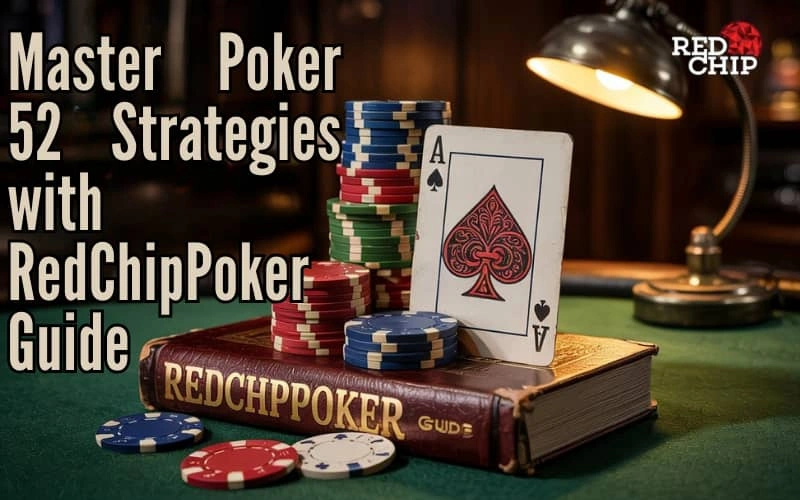Poker 52 is a popular variation of poker, and mastering its strategies can lead to better decision-making, increased chances of winning, and an overall enhanced experience. In this article red chip technology, we will explore strategies tailored to Poker 52 and provide insights from the RedChipPoker guide that can help players excel in this challenging game.
Understanding Poker 52 and Its Variants
Poker 52 follows similar rules to other poker variations, such as Texas Hold’em, but there are unique elements to the game that make it distinctive. The primary difference lies in the use of a 52-card deck, which is the standard for most poker games. The goal is to create the best possible five-card hand from the combination of the community cards and the two hole cards dealt to each player.
Poker 52 is often played in various formats, including no-limit, pot-limit, and fixed-limit. Each format requires a different approach, and understanding the nuances of these variations is key to developing an effective strategy.
Starting Hand Selection in Poker 52
One of the most important aspects of Poker 52 is starting hand selection. Knowing which hands to play and when to fold is crucial. In the RedChipPoker guide, starting hand selection is emphasized as the foundation for any successful strategy.
Generally, strong starting hands include high pairs, suited connectors, and high cards like Ace-King. These hands have the potential to develop into powerful combinations. It is important to be selective with starting hands and avoid playing marginal hands, which often lead to unnecessary losses.
For beginners, the advice is to stick to premium hands in the early stages of the game, particularly when the stakes are high. This conservatism helps minimize the risks of losing chips in uncertain situations. As players gain more experience, they can expand their starting hand range and incorporate more creative strategies.
Position and Its Impact on Strategy
Position is another crucial concept in Poker 52, and it plays a pivotal role in shaping your decisions. Players in later positions, such as the cutoff and button, have the advantage of seeing what their opponents do before making their own move. This knowledge allows players to make more informed decisions about whether to bet, raise, or fold.
In contrast, players in early positions must be more cautious with their bets, as they do not have the luxury of observing others before acting.
The RedChipPoker guide stresses the importance of positional awareness, advising players to widen their range of hands when in later positions and tighten up their range when in earlier positions.
Betting Strategy and Pot Control
Betting strategy is integral to any poker game, and Poker 52 is no exception. Pot control is particularly important in situations where you have a strong hand but do not want to inflate the pot too much.
Betting small with marginal hands can induce bluffs or draws from opponents, while larger bets can protect strong hands and force opponents to fold weaker hands.
When you are in a position of strength, especially with premium hands, it is important to build the pot. On the other hand, if you have a weak hand or are unsure about your opponents’ strength, smaller bets or even checking can prevent unnecessary losses.
Bluffing and Semi-Bluffing
Bluffing is an essential part of Poker 52 and can be the difference between winning and losing. However, it is important to use bluffing sparingly and in the right situations. A well-timed bluff can pressure your opponents into folding, but bluffing too frequently can make you predictable and result in losing chips.
The RedChipPoker guide recommends using semi-bluffing as a more effective alternative to pure bluffing. Semi-bluffing involves betting or raising with a hand that is not yet strong but has the potential to improve. For example, betting with a flush draw or straight draw can put pressure on opponents while still giving you a chance to improve your hand.
Bluffing and semi-bluffing are particularly useful when you are in a favorable position, such as being the last player to act or when you have a tight table image.
Reading Opponents and Adjusting to Their Strategy
Reading your opponents is one of the most valuable skills in Poker 52. By paying attention to their betting patterns, body language, and tendencies, you can gain insights into the strength of their hands and make more informed decisions.
Players who are overly aggressive may be prone to bluffing, while passive players may only bet with strong hands. By adjusting your strategy based on these observations, you can capitalize on your opponents’ mistakes and gain an edge in the game.
One effective strategy is to use “value betting” when facing opponents who are likely to call with weaker hands. By betting when you have a strong hand, you can extract more value from your opponents and increase your chip stack.
Pot Odds and Expected Value
Understanding pot odds and expected value is critical for making profitable decisions in Poker 52. Pot odds refer to the ratio between the current size of the pot and the cost of a contemplated call.
The RedChipPoker guide teaches players how to calculate pot odds and EV in various situations to help them make the most profitable decisions. Knowing when to fold, call, or raise based on pot odds and EV is essential for long-term success in Poker 52.
Conclusion
Mastering Poker 52 requires a combination of solid strategy, keen observation, and the ability to adapt to changing circumstances. The strategies outlined in the RedChipPoker guide provide a solid foundation for improving your gameplay. By focusing on starting hand selection, position, betting strategy, bluffing, and reading your opponents, you can increase your chances of winning and become a more successful Poker 52 player. With practice and careful application of these strategies, you’ll be well on your way to mastering the game and achieving consistent success at the tables.


